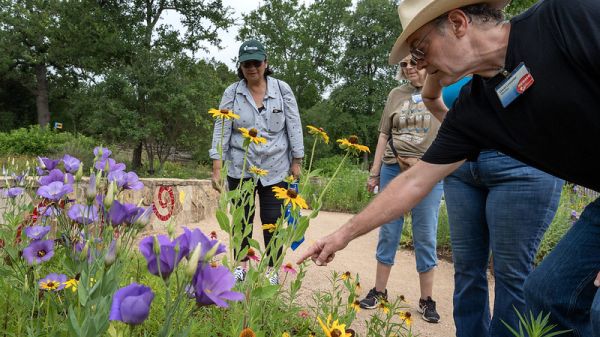Environmental Education Research Bulletin Issue 14

Introduction
Stanford University researchers have collaborated with NatureBridge, ChangeScale, and the North American Association for Environmental Education (NAAEE) to create this 14th and final issue of the Environmental Education Research Bulletin (EERB). Since 2011, we have written more than 200 environmental education research summaries, which are accompanied by bottom-line applications for practice. We undertook this endeavor with the intention of helping talented environmental educators bridge the research-and-practice gap. We endeavored to enhance the accessibility of recently reported research by highlighting ways for practitioners to apply research findings to their work.
In each of the 14 issues, we focus on a range of topics pertinent to on-the-ground environmental educators, including environmental literacy, equity and inclusion, connection to place, professional development, and evaluation. We appreciate the support of our project advisors and collaborators, whose additional strategic emphases have informed our work. For example: NAAEE’s focus on civic engagement, the intersection of environmental education and conservation, and early childhood ensure those issues remain front and center in these bulletins; NatureBridge has encouraged an ongoing emphasis on the intersection of social-emotional learning and environmental education; and ChangeScale’s focus on developing tools and practices at the nexus of informal environments with K–12 learning settings have continued to inform the EERBs.
This final EE Research Bulletin includes summaries of research articles published between July and December 2017. They have been drawn from of a number of environmental education-related journals, including the Journal of Environmental Education, Environmental Education Research, Applied Environmental Education & Communication, South African Journal of Environmental Education, International Journal of Science Education, Journal of Interpretation Research, Journal of Environmental Psychology, and Visitor Studies.
For ongoing dialogue around the research-and-practice interface, we encourage you to participate in the research and evaluation discussion group of eePRO, NAAEE’s professional development community. To join eePRO, first create an account. Also be on the lookout for the course under development through the Stanford Social Ecology Lab, in partnership with NAAEE and ee360, on leveraging resources such as the EE Research Bulletins and other research-and-practice resources. If you have comments or questions about these summaries, email socialecology@ stanford.edu. In particular, we would love to hear your inspiring stories and ideas about how you have infused ideas from research into your practice. We believe, truly and deeply, that this open dialogue is essential to enhance the effectiveness of our work and, in the end, will make the world a better, more sustainable, thriving place, now and in the future.
See you in the field!
Nicole M. Ardoin, Ph.D.
Project Lead and Co-Founder, EERBs
Steering Committee Member, ChangeScale
Associate Professor, Stanford University
Jason Morris
Founding Steering Committee Member, ChangeScale
Program Officer, Pisces Foundation
Judy Braus
Executive Director, North American Association for Environmental Education
Stephen Streufert
Vice President of Education, NatureBridge
ABOUT THE RESEARCH BULLETIN
The Environmental Education Research Bulletin is a project of Dr. Nicole Ardoin and her team at Stanford University, with support from ChangeScale and ee360, a cooperative project of the U.S. EPA and the North American Association for Environmental Education (NAAEE). The bulletin is designed to inform environmental and sustainability educators about recent relevant research, with a primary emphasis on informal, field, and residential settings, as well as stewardship behavior, conservation, and related topics. Although other environmental educators and those in related fields might also find this bulletin useful, it does not—nor is it intended to—cover all aspects of environmental education. This Research Bulletin, as well as past issues, is available online through the ChangeScale website, as well as on the NAAEE website. Please send questions and feedback to eeresearchbulletins@changescale.org.